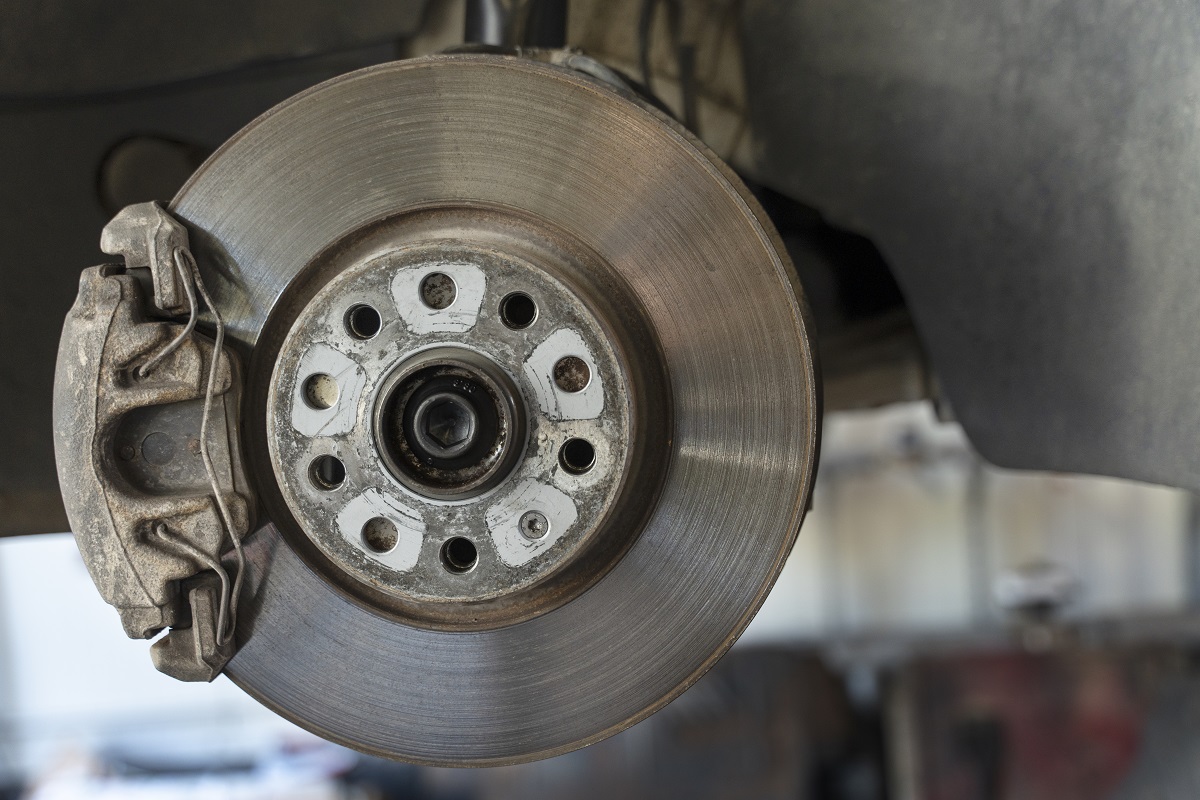
When your steering wheel starts shaking every time you hit the brakes, it’s more than just an annoying sensation—it’s a warning sign. While the problem could stem from a range of issues, the good news is that many of them can be spotted (and even addressed) from your own driveway or garage.
This article walks you through five at-home checks you can do if your steering wheel shakes when braking, helping you identify whether it’s time for a quick DIY fix or a visit to the mechanic.
What Causes Steering Wheel Shake When Braking?
Before diving into the checks, it helps to understand what’s happening. The most common culprits include:
- Warped brake rotors
- Uneven brake pad wear
- Suspension or steering issues
- Tire or wheel problems
- Loose or damaged components
Most of these issues disrupt the smooth operation of your braking system or the wheels’ contact with the road, causing the steering wheel to vibrate when you apply the brakes.
Let’s go over how to start narrowing it down.
1. Is It Your Brake Rotors? Check for Warping

Brake rotors take a beating every time you stop. Over time, they can become uneven or warped, especially if they’ve overheated or worn out. Warped rotors cause uneven contact with the brake pads, sending a vibration through the steering column.
How to check at home:
- Visual inspection: Look through your wheels or remove them to see the rotors. You’re looking for discoloration, scoring, or uneven surfaces.
- Feel the brake pedal: If the shake is also noticeable in the brake pedal (not just the wheel), warped rotors are very likely the culprit.
- Run your hand along the edge (when cool): Feel for high and low spots on the rotor surface. It should be smooth. Any noticeable bumps or grooves may indicate warping.
What to do next:
If you see significant wear or warping, the rotors may need resurfacing or replacement. This isn’t a fix you should attempt unless you have brake service experience, but it’s a quick thing to spot on your own.
2. Are Your Brake Pads Uneven or Worn Out?
Brake pads are designed to wear down over time. However, if they wear unevenly or become glazed from excessive heat, they can cause vibrations—especially during braking. That’s why checking your pads regularly should be part of your daily maintenance plan, especially if you drive in stop-and-go traffic or hilly terrain.
Signs to check:
- Brake pad thickness: If you can safely peek through the wheel, check the visible pad against the rotor. If it’s less than ¼ inch thick, it’s worn.
- Noise: Do you hear squeaking or grinding when braking? That’s another clue your pads are too far gone.
- Pulling to one side: Uneven brake pad wear may cause the car to veer slightly during braking, making the steering wheel shake in response.
DIY tip:
If you’re comfortable removing the wheel and inspecting the pads directly, it’s a fast way to spot wear issues. Pads should be replaced in pairs (front or rear), and ignoring them can cause damage to the rotors.
3. Could It Be a Tire or Wheel Problem?
Sometimes, the issue isn’t with the brakes at all. Tires and wheels that are out of balance, unevenly worn, or damaged can also cause steering wheel shaking that becomes more noticeable when braking—especially at higher speeds.
Here’s what to look for:
- Uneven tire wear: Run your hand along the tread. Are there flat spots, bulges, or uneven patterns?
- Low tire pressure: Check all four tires using a gauge Underinflated or overinflated tires affect braking performance.
- Loose lug nuts: With the car safely parked, use a lug wrench to ensure your wheels are snug. A loose wheel can vibrate under braking load.
- Wheel damage: Look for cracks, bends, or warping in the rim itself.
If your tires haven’t been rotated or balanced in a while, that could also be the underlying issue. Tire imbalance is a common and often overlooked cause of front-end vibration.
4. Is the Suspension Doing Its Job? Look for Wear or Play
Your car’s suspension—specifically the tie rods, ball joints, and control arms—helps keep your wheels aligned and stable. If these components are worn or damaged, your vehicle might not respond properly when braking, especially during turns or uneven stops.
Signs of trouble:
- Excessive bounce: Push down on the front of your car. If it bounces more than once or twice, your shocks or struts may be worn.
- Visible wear: With the wheel off, inspect the suspension bushings and joints for cracks or leaks.
- Play in steering: Turn the steering wheel back and forth (engine off). If it feels loose or unresponsive, something in the steering linkage may be failing.
Worn suspension parts usually don’t just cause brake-related shaking—they also lead to poor handling, uneven tire wear, and a less comfortable ride overall.
5. When Was Your Last Alignment? Check Your Steering Wheel Position
If your steering wheel shakes when braking, and your car also tends to pull slightly left or right, alignment could be playing a role. Poor alignment doesn’t directly cause vibrations, but it worsens any issues with tires, brakes, and suspension.
DIY indicators:
- Off-center steering wheel: When you’re driving straight, the wheel should sit perfectly centered.
- Vehicle pulling: If you constantly correct the steering when braking, it’s a likely alignment issue.
- Uneven tire wear patterns: Combine this clue with your tire check to reinforce the diagnosis.
While alignment is best corrected at a shop with special equipment, noticing these signs early can save your tires, fuel efficiency, and braking performance.
Should You Keep Driving If Your Steering Wheel Shakes When Braking?

The short answer is: not for long. A vibrating steering wheel during braking isn’t something to ignore. While some causes are mild (like tire balance), others—like warped rotors or worn suspension parts—can escalate into more dangerous or expensive problems.
Driving with these symptoms can:
- Increase stopping distance
- Reduce control in emergency maneuvers
- Cause uneven wear across braking components
Even if you don’t fix the problem yourself, running through these five checks gives you a head start before seeing a mechanic. You’ll know what to expect and can speak confidently about the symptoms, potentially saving time and diagnostic fees.
When to Seek Professional Help
If your at-home checks turn up nothing, or if the vibration worsens, it’s time to visit a trusted mechanic. Let them know:
- When the shaking occurs (light vs. heavy braking, high vs. low speed)
- Whether the brake pedal also vibrates
- If you hear any noises or feel pulling
The more clues you provide, the faster they’ll find the root cause.
The Bottom Line: A Shaking Steering Wheel Isn’t Normal
Your steering wheel is supposed to feel solid and responsive—not jittery under pressure. If your steering wheel shakes when braking, your car is trying to tell you something. Fortunately, many of the common causes are easy to detect with a bit of observation, basic tools, and some mechanical curiosity.
Use the five checks above as your starting point. And remember, catching issues early often leads to cheaper, easier repairs—and safer driving.
